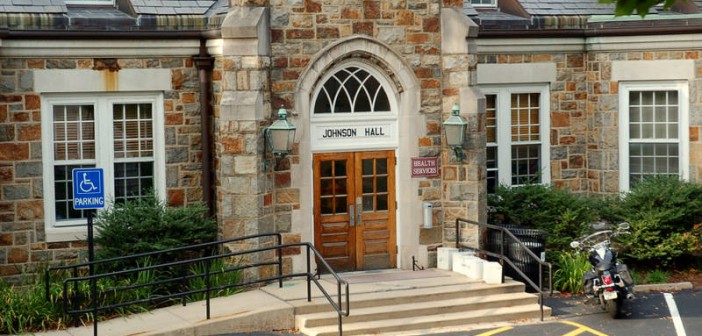Most students on campus are asleep or preparing for a morning class at 8:45 a.m. on a Monday, but the seats in the Health and Wellness Center are already filling with patients. The room is nearly silent, and the tapping of the receptionist’s keyboard provides the only soundtrack.
The silence is then broken by a sharp cough from a student in the corner. After a moment’s pause, the girl next to him begins coughing, harmonizing with him hack for hack. The blur of runny noses, high fevers and sore throats are evidence that cold and flu season has returned to campus. To combat these illnesses, the university’s Health and Wellness Center is offering new programs aimed at illness prevention and administering care.
Angelika Wyzlic, ’18, who works at the center’s sign-in desk, said the days leading up to final exams in December were especially busy for the center’s staff.
“We definitely saw a lot more people in the last two weeks or so of the last semester,” she said. “Especially as the weeks went on and it got colder.”
While catching a cold or feeling unwell isn’t uncommon on college campuses, especially during the winter months, Lehigh experiences these symptoms more than most schools, according to data from the National College Health Assessment.
This season, Lehigh and Northampton counties lead the state of Pennsylvania in cases of influenza, according to the Pennsylvania Department of Health.
According to the December/January edition of the InSTALLments published by Health Advancement and Prevention Strategies Office, 16 percent of Lehigh students were diagnosed or treated for strep throat by a health professional in the last 12 months. By comparison, the InSTALLment reported the national average at 11.5 percent. In addition, 22.1 percent of Lehigh students said that the flu and other similar illnesses had a negative effect on their performance in the classroom.
Dr. Thomas Novak, the center’s associate director, said in an email the most commonly seen illnesses at the center are upper respiratory infections, acute pharyngitis — a sore throat — sinusitis, pink eye and urinary tract infections.
“On average, the Lehigh University Health and Wellness Center will see between 10,000 and 11,000 student visits per year,” Novak said. “Our students use our services on average of 1.5 visits per year.”
Novak went on to explain how the average number of visits for Lehigh students is again higher than the national average. According to a 2010 study by the American College Health Association, the average across all institutions of higher learning was 1.2 visits per year.
Despite the high volume of patients, Novak was confident in the center’s ability to treat and care for students.
“Our physicians and nurse practitioners have full prescriptive authority and write for medications just the same as your providers at home,” Novak said.
Novak also mentioned the center’s aim to educate students on their illnesses and provide care guidance with each visit. Wyzlic referred to several upcoming flu shot clinics that are taking place off-campus and are promoted by the center.
Operating under the Bethlehem Health Bureau, four locations in Bethlehem are offering immunization clinics at least once a month. The different groups’ dates are staggered to ensure there is one offered about once a week. A flyer at the sign-in desk also includes the Bethlehem Health Bureau’s phone number, which students can call to make an appointment.
“It’s a good idea,” Sherri Murphy, ’18, said. “The hours are mostly in the afternoon, which is better for people’s schedules.”
Murphy said she wished the center could be open at more convenient hours for college students.
“It’s definitely easy to just make an appointment online and head in, but I wish it was open at later hours when we aren’t in class,” Murphy said.
Back at the health center, the seats have steadily been filling up, with the sound of coughing becoming all the more frequent. The new semester has just started, and so has cold and flu season.






Comment policy
Comments posted to The Brown and White website are reviewed by a moderator before being approved. Incendiary speech or harassing language, including comments targeted at individuals, may be deemed unacceptable and not published. Spam and other soliciting will also be declined.
The Brown and White also reserves the right to not publish entirely anonymous comments.